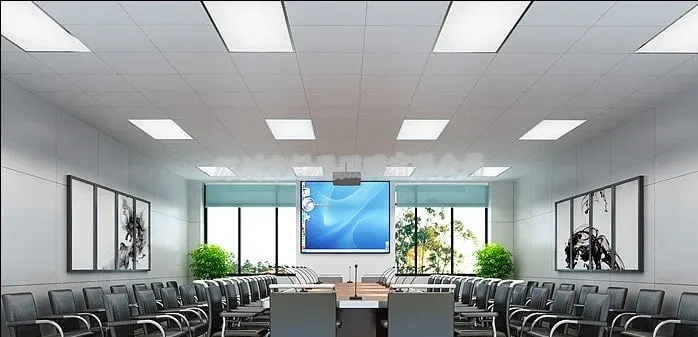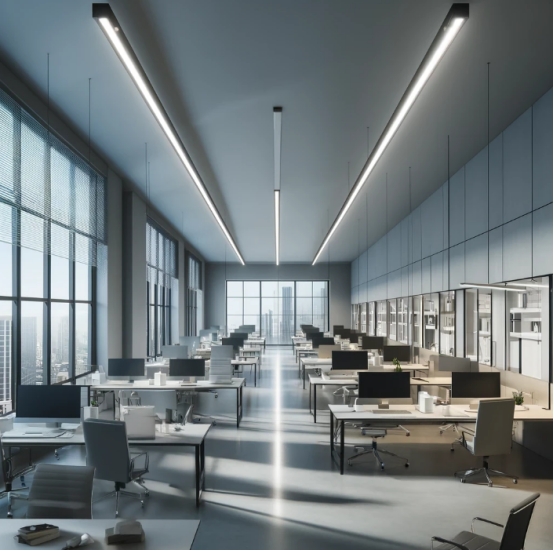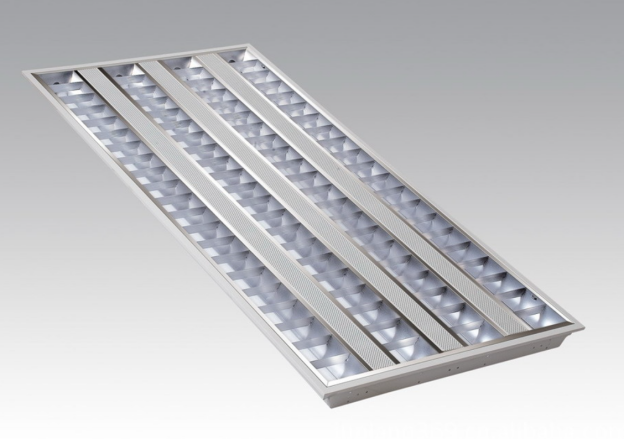Introduction
The essence of any indoor or outdoor setting lies in lighting, a crucial component that can either make or break the ambiance of a space. A flick of a switch can transform a dull dungeon into an exquisite wonderland or vice versa. The intricacies of lighting, however, go beyond the mere on/off switch. Not all lighting is created equal, and a paramount factor to consider in any lighting setup is the angle of the light beam. This element plays an indispensable role in achieving the desired lighting effect.
To create the perfect lighting setup, understanding the importance of light angle in lighting is not only a critical aspect but also a fundamental necessity. Irrespective of whether you are an interior designer who wants to bring a dreamy atmosphere to a room, an event planner who wants to captivate an audience, or a homeowner who wants to enhance the aesthetic appeal of a space, comprehending light angle can help you achieve your goals.
Thankfully, OlamLED is a company that provides high-quality lighting solutions that can help you achieve the perfect lighting setup for any space. OlamLED specializes in LED lighting products that are not only energy-efficient but also long-lasting, and they have positioned themselves as a leader in the lighting industry through their commitment to sustainability and innovation. Backed by a team of experienced professionals, their products are designed to provide optimal performance, and they can help you find the perfect lighting solution for your specific needs.
In this article, we will delve deeper into the intricacies and importance of beam angle in lighting and explore how OlamLED can help you achieve the perfect lighting setup that will transform any space into a visually appealing and captivating experience.
What is a Beam Angle?
Are you interested in learning more about the mysterious and perplexing practise of lighting design? So you’d best strap up since this is a difficult and cryptic world that needs a thorough comprehension of several ideas, beam angle being the most important of them all.This enigmatic and elusive concept refers to the angle of the cone-shaped beam of light that is emitted from a fixture, and it plays an irreplaceable and crucial role in determining the spread of light and achieving the desired lighting effect.
Spot lighting is one of the most prevalent techniques in lighting design that can bring any space to life by directing a light source at a specific object or area. It’s a popular option for retail establishments, museums, and galleries where certain items or works of art need to be highlighted. Moreover, a narrow beam angle must be used to provide a stunning and thrilling effect.
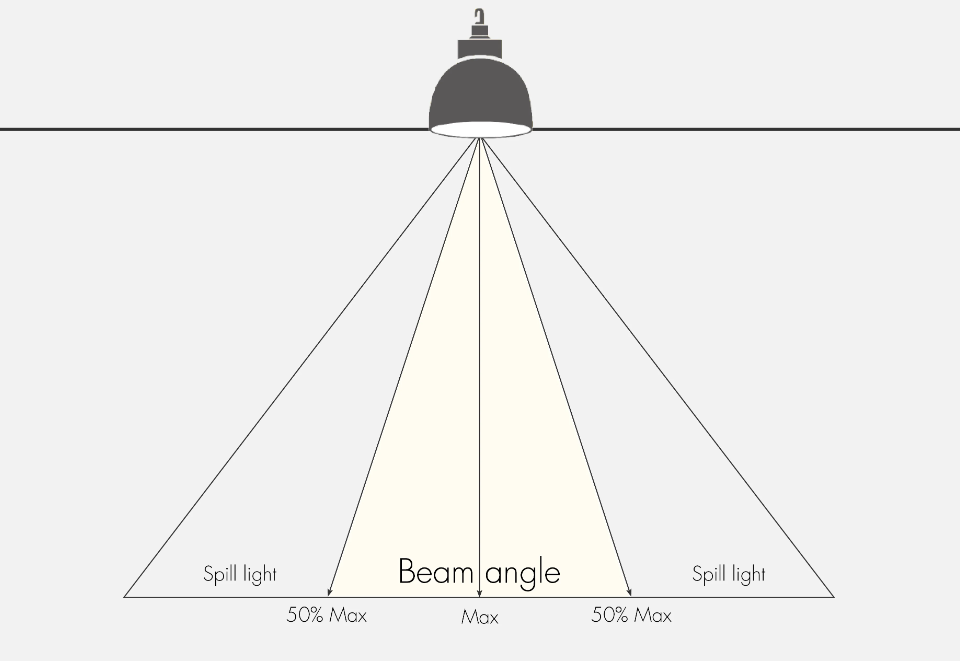
A essential and inherent aspect of a light fixture’s design, the beam angle is one of the key elements that affects the light’s coverage area. An ambient lighting fixture should have a broader beam angle than one with a narrower beam angle since the latter will produce light across a greater region while the former will emit light in a more concentrated area.
The importance of beam angle in lighting design is gargantuan and cannot be overstated. It plays a critical and pivotal role in the overall aesthetic appeal of any space, and it’s vital to consider the beam angle of your light fixtures when designing any space, be it a retail space, art gallery, or home.
Understanding the concept of light angle is of paramount and supreme importance in lighting design. The appropriate light angle may be used to produce an amazing and jaw-dropping experience that will make an impact on anybody who visits your place. It is the key that opens the door to hypnotic and compelling lighting effects.
Why is Beam Angle so Important?
The beam angle of a light fixture is a multifaceted and pivotal element in lighting design, and it’s not something you can just gloss over. This highly complex and intricate concept influences the ambiance and mood of a space, the effectiveness of lighting for specific tasks and areas, and energy efficiency and cost savings.
When it comes to ambiance and mood, the beam angle can do wonders. With a narrow beam angle, you can create a dramatic effect, while a wider beam angle can provide ambient lighting. Imagine a restaurant where narrow beam angles highlight artwork or set the mood for a romantic dinner, while wider beam angles create a comfortable dining experience.
Another crucial factor is selecting the proper beam angle for particular applications and locations. For example, in an office environment, tight beam angles may be used to provide task lighting for workstations and larger beam angles can be used to offer ambient lighting for common areas, boosting the efficiency of lighting in each location.
Therefore, the beam angle of a light fixture is a vital and intricate aspect of lighting design that cannot be taken lightly. It can affect the ambiance and mood of a space, the effectiveness of lighting for specific tasks and areas, and energy efficiency and cost savings. To achieve the desired lighting effect while optimizing energy efficiency and cost savings, selecting the appropriate beam angle is of utmost importance in lighting design.

How do you measure Beam Angles?
The bedrock of lighting design hinges on the nitty-gritty details of measuring the beam angle – a measurement that must be taken seriously. The intended lighting effect is largely determined by the beam angle since it controls how far the light generated by a fixture will spread. This article will clarify the differences between angle light and beam angle measurements while delving further into the complexities of measuring beam angle.
Lighting designers use a very sophisticated gear called a goniophotometer to precisely measure the beam angle. By mounting the fixture on the goniophotometer and spinning it around the light source to compute the angle of emission, this tool analyses the distribution of light generated by a fixture and finally enables designers to precisely estimate the beam angle.
Beam angle and angle light are two distinct metrics that require careful analysis, thus it is essential to distinguish between them. Although beam angle describes how the light is spread out by the fixture, angle light quantifies the angle at which light is emitted from a fixture.Angle light measurements are critical for determining the direction of light, while beam angle measurements are paramount in determining the spread of light.
Precisely measuring the beam angle is vital in lighting design, as it ensures that the desired lighting effect is achieved, and the fixture is operating optimally. Incorrect measurements can result in ineffective lighting, leading to wasteful energy consumption and increased costs.
Measuring beam angle is a pivotal aspect of lighting design that requires the use of a goniophotometer to determine the distribution of light emitted by a fixture. By comprehending the importance of precise beam angle measurements and distinguishing between angle light and beam angle, lighting designers can optimize energy efficiency and cost savings while achieving the desired lighting effect.
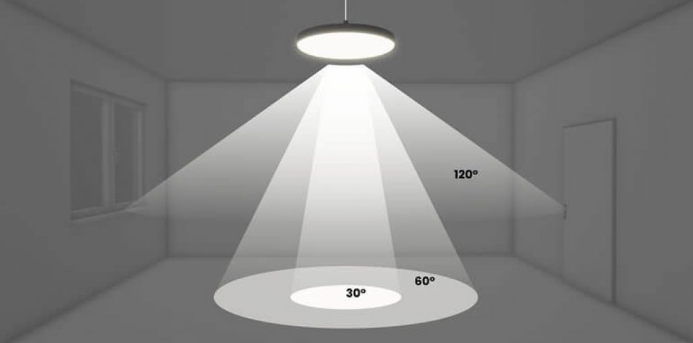
Beam Angle Choosing Criteria!
When it comes to selecting a beam angle for a lighting fixture, it’s not a simple matter of choosing one at random. A myriad of factors must be taken into account, including room size, ceiling height, wall color, and task-specific lighting needs. These variables can have a significant impact on beam angle selection, and understanding them is crucial for achieving the desired lighting effect.
Room size is an essential consideration when selecting a beam angle. A larger room necessitates a wider beam angle to ensure adequate lighting coverage, while a smaller room may require a narrower beam angle for a more concentrated lighting effect. Additionally, ceiling height plays a vital role in beam angle selection. A higher ceiling may require a narrower beam angle to avoid light loss, whereas a lower ceiling may benefit from a broader beam angle for optimal lighting coverage.
Wall color is yet another variable that can impact beam angle selection. Darker walls may absorb more light, necessitating a wider beam angle to compensate for the light loss. In contrast, lighter walls may reflect more light, enabling a narrower beam angle to be used.
Which Beam Angle should you Choose?
Traversing the treacherous terrain of beam angles can leave even the most seasoned lighting connoisseur in a state of befuddlement, with a confounding array of options at their disposal. But despair not, dear reader, as we endeavor to proffer a comprehensive guide to the myriad beam angles available and elucidate their optimal usage. We will plunge into the choicest beam angles for general lighting, accent lighting, and task lighting, and extol the virtues of employing adjustable beam angle lighting fixtures.
The spectrum of beam angle options spans a broad range, from the pinpoint precision of narrow spotlights to the all-encompassing beams of wide floodlights. Narrow beam angles are generally reserved for accent lighting or accentuating specific areas, while wider beam angles are optimal for general lighting or generating ambient lighting. Medium beam angles often find a balance, perfect for task lighting or engendering a blend of ambient and task lighting.
For general lighting, a beam angle between 30 and 60 degrees frequently hits the bullseye. This provides sufficient coverage without inducing excessive glare or shadows. In the realm of accent lighting, a narrower beam angle between 15 and 30 degrees can be employed to capture attention toward particular areas or objects. For task lighting, a narrower beam angle between 10 and 25 degrees is recommended for creating concentrated, directed lighting.
Adjustable beam angle lighting fixtures furnish the flexibility to tailor the beam angle to your specific lighting needs. This is especially advantageous in areas that necessitate both ambient and task lighting, such as a kitchen or living room. With adjustable beam angle fixtures, you can create a range of lighting effects, from lively and dynamic to warm and snug, with a mere flick of the switch.
Sifting through the profusion of beam angles to pinpoint the ideal fit for a lighting fixture requires astute consideration of the distinct lighting needs of the space. A general guideline dictates a beam angle between 30 and 60 degrees as the optimal range for general lighting, while narrower beam angles between 15 and 30 degrees work better for accent lighting, and even narrower beam angles between 10 and 25 degrees are optimal for task lighting. And with adjustable beamlight fixtures, the potential permutations are boundless, allowing you to sculpt the ultimate lighting experience for any space.
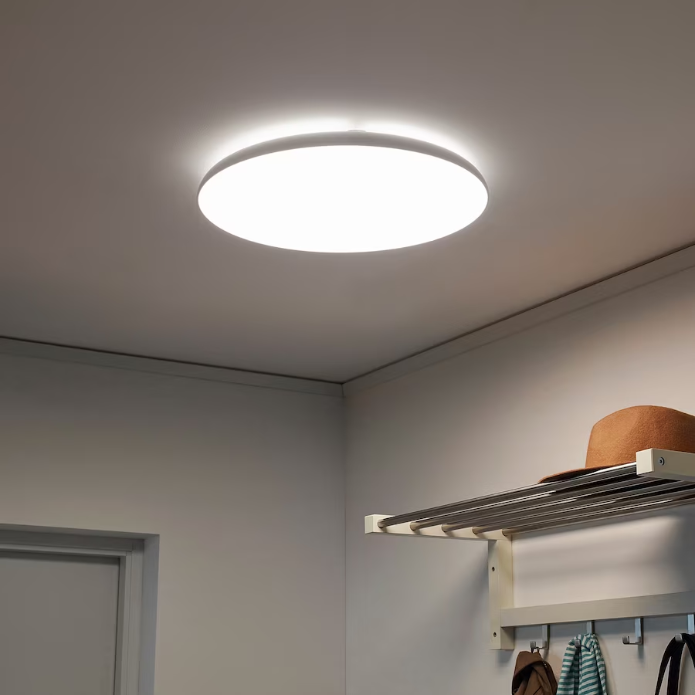
Real-Life Examples of Beam Angles
The world of lighting design is an intricately woven tapestry of boundless possibilities, with beam angle choices standing at the forefront of the decision-making process. The impact of beam angle on both functionality and aesthetics is a matter of grave importance, as these real-life examples of lighting projects attest.
In the realm of restaurant lighting, a well-regarded eatery opted for the razor-sharp focus of narrow beam angle spotlights to accentuate the intricate artworks and decor. This choice created a charming and snug atmosphere, perfect for intimate dining experiences. Furthermore, the spotlights prevented unsightly glare and shadows, affording diners the chance to fully appreciate the artistic masterpiece on display.
The world of office lighting is not to be outdone, as wider beam angle fixtures were employed to generate a seamless and harmonious lighting scheme throughout the space. The fixtures were cunningly placed to eliminate distracting shadows and pesky glare on computer screens, thus fostering a comfortable and productive workspace.
Retail store lighting proved to be a melting pot of different beam angles, with medium and narrow beam light fixtures working in tandem to create a dazzling and visually stimulating atmosphere. By utilizing the narrow beam angle fixtures to spotlight specific products, and medium beam angle fixtures to provide a general illumination, the store was able to achieve a perfect balance between functionality and aesthetics.
These examples illustrate the immense significance of beam angle in the world of lighting design. By choosing the appropriate beam angle for each space, designers can vastly enhance the functionality and aesthetics of the area. The spotlights prevented glare and shadows, while the wider beam angle fixtures provided consistent lighting. Using a variety of different beam angle fixtures allowed for unprecedented flexibility in creating diverse lighting effects.
Conclusion
In conclusion, comprehending the concept of light angle is an absolute must to achieve the desired lighting effects in any given space. The decision of beam angle is critical as it directly impacts the light spread, intensity, and direction. So, it’s essential for designers to consider various factors like room size, ceiling height, wall color, and other important aspects to make an informed decision.
At OlamLED, we have years of experience offering dependable and energy-efficient high-quality lighting solutions. Our knowledgeable staff can guide you through the complex world of lighting design and create solutions that are unique to your needs.
You need look no farther than OlamLED if you’re looking for the ideal lighting project! We provide outstanding customer service and superior goods that precisely match your needs. Get a quotation from us today to find out how we can help you meet your lighting goals.
Request a Quote for Your Lighting Projects!
Looking to embark on an illuminating project that will truly set you apart from the crowd? Search no further than OlamLED – your preeminent one-stop-shop for all things lighting. Our unmatched commitment to quality, reliability, and customer satisfaction sets us apart from the mundane masses in the highly competitive lighting industry.
At OlamLED, we are elated to proffer a prodigious assortment of LED beam light products that are unparalleled in their energy-efficiency, cost-effectiveness, and long-lasting capabilities. Whether you are in dire need of general lighting, task lighting, or accent lighting, our products are custom-designed to cater to your individualized needs and bestow you with unparalleled performance.
What truly distinguishes us from our counterparts is our tireless team of expert lighting designers and engineers, who work intimately with our clientele to create bespoke lighting solutions that are custom-tailored to their precise specifications. We are resolute in our unwavering commitment to providing exceptional customer service, and we leave no stone unturned in ensuring that our products are installed and functioning to our customers’ complete satisfaction.
When you opt to choose OlamLED for your lighting projects, you can rest assured that you are investing in nothing but the crème de la crème of products and services available on the market. Our team is ardently devoted to keeping abreast of the latest lighting technology and design principles, so that we can furnish you with cutting-edge lighting solutions that are both supremely functional and visually breathtaking.
So, why settle for subpar lighting products or services when you can experience the unparalleled OlamLED difference? Take the first step towards a brighter future by getting in touch with us today to request a quote for your lighting project and let us assist you in bringing your lighting goals to fruition, thereby creating a space that is both aesthetically alluring and functionally exceptional.
